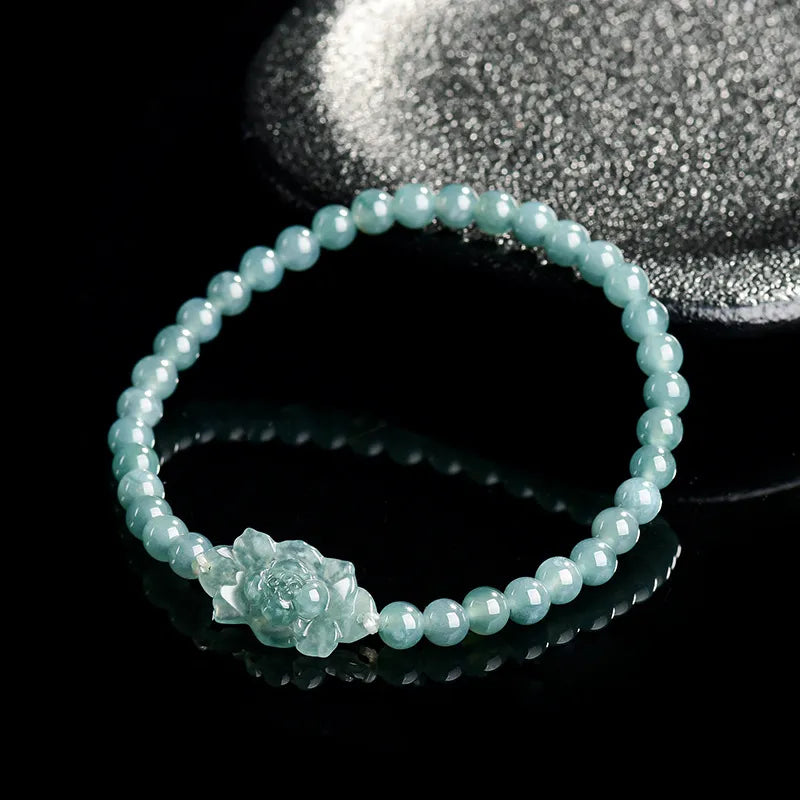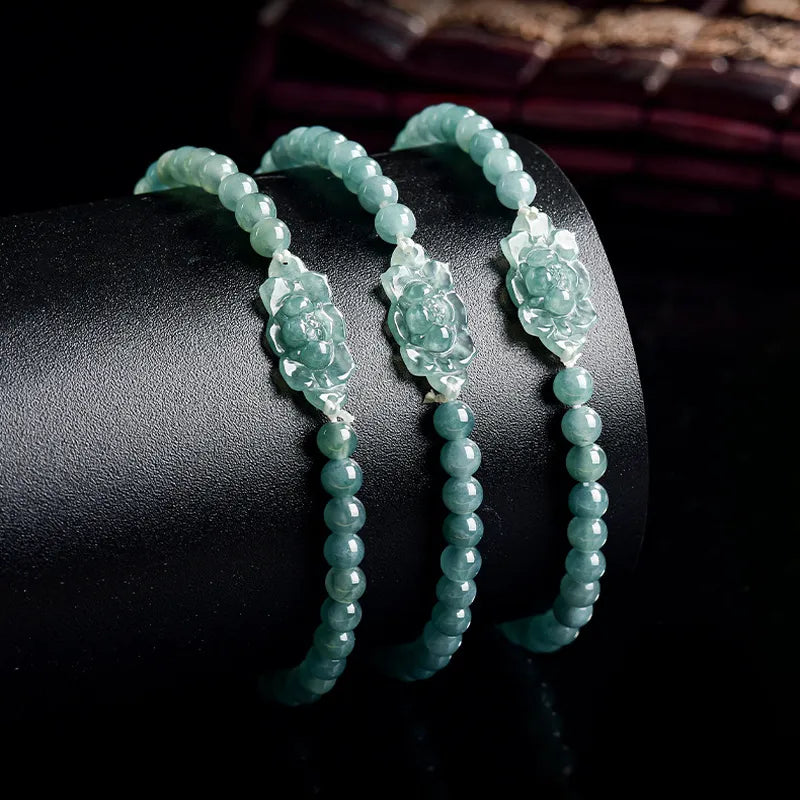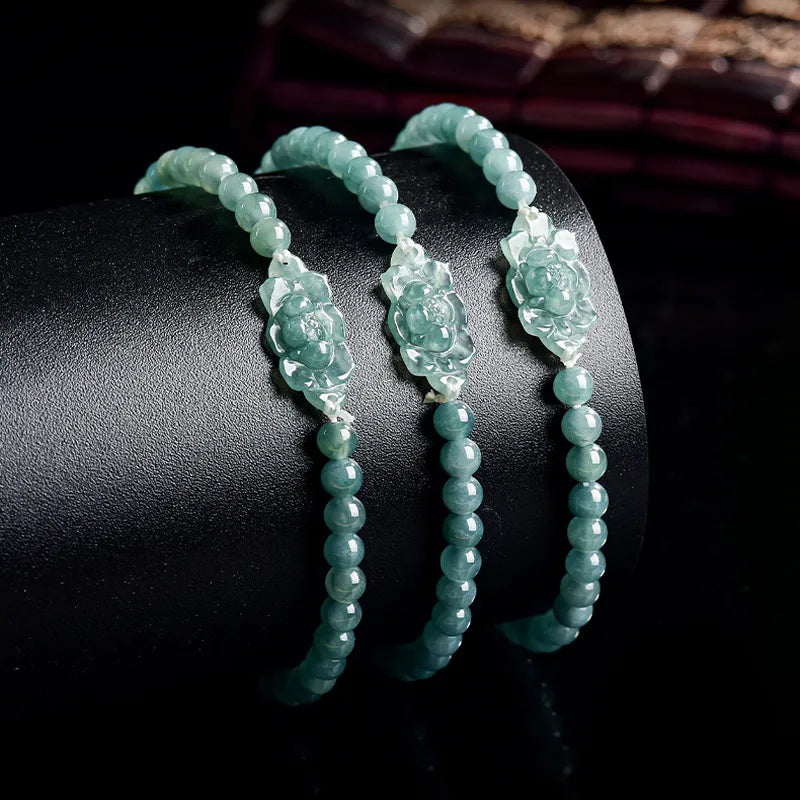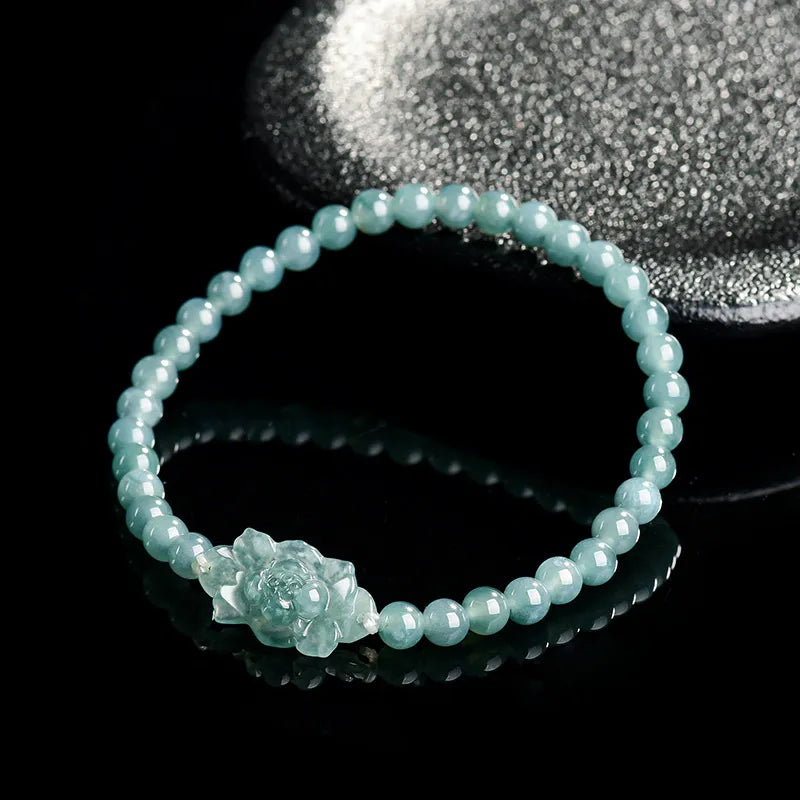How to Identify Jade Bangle Colors Under Lighting: A Practical Guide
The color of a jade bangle can vary dramatically under different lighting conditions, making it essential to understand how artificial and natural light affect its appearance. Misjudging color due to poor lighting can lead to misconceptions about quality. Below, we explore techniques to analyze jade hues accurately, focusing on light sources, angles, and environmental factors.

Understanding Light Types and Their Impact
Different light sources alter how jade reflects and absorbs color, influencing perception.
- Incandescent Lighting: Warm, yellow-toned bulbs often enhance red or yellow undertones in jade, making it appear richer or more saturated. However, this can mask cooler hues like lavender or green, leading to inaccurate color assessments.
- Fluorescent Lighting: Cool, blue-toned fluorescent lights may dull warmer colors, making green jade appear grayish or muted. This lighting can also exaggerate translucency, giving the illusion of higher clarity.
- LED Lighting: Neutral white LEDs (around 5000K) are ideal for evaluating jade, as they balance warm and cool tones. Avoid LEDs with extreme color temperatures, which can distort natural hues.
Pro Tip: Always compare jade under multiple light sources. A bangle that looks vibrant under one type of light may appear dull under another.
Angle and Intensity: How to Position the Light
The way light interacts with jade depends on its angle and brightness.
- Direct vs. Diffused Light: Direct light (e.g., a spotlight) highlights surface textures and color saturation but can create harsh reflections. Diffused light (e.g., through a sheer curtain) softens shadows, revealing subtle color variations and internal structures.
- Side Lighting: Shining light from the side accentuates translucency and internal patterns. For example, a green jade bangle may display a “water line” (a layered effect) more vividly under side illumination.
- Backlighting: Holding a jade bangle against a light source (like a window) reveals its translucency. High-quality jade will allow light to pass through evenly, while lower-grade stones may appear opaque or blotchy.
Testing Method: Rotate the bangle slowly under a fixed light source. Observe how colors shift—true jade will show gradual transitions, while dyed or treated stones may display abrupt color changes.
Natural Light: The Gold Standard for Color Verification
Sunlight provides the most accurate representation of jade’s true color but requires careful timing.
- Morning and Late Afternoon Light: Soft, golden-hour sunlight minimizes glare and enhances color depth without overpowering the stone. Midday sunlight, while bright, can create harsh reflections that obscure details.
- Cloudy Day Lighting: Overcast skies diffuse sunlight evenly, making it ideal for spotting inconsistencies in color or treatment. Jade should maintain its hue regardless of minor cloud cover.
- Indoor vs. Outdoor Comparison: If purchasing indoors, step outside briefly to verify color. A bangle that looks “perfect” under store lighting may appear washed out in natural light.
Cultural Context: In traditional markets, sellers often use “jade lamps” (specialized lights that mimic natural daylight) to showcase stones. While helpful, always cross-check with actual sunlight.
Common Pitfalls: Avoiding Light-Based Misjudgments
Lighting tricks can lead to incorrect conclusions about jade quality.
- Color Casting: Objects near the jade (e.g., colored walls, clothing) can reflect onto the stone, altering its perceived hue. Use a neutral background like white paper or fabric.
- Over-Polishing Glare: Highly polished jade may reflect light so intensely that it masks underlying color. Tilt the bangle slightly to reduce glare and observe the true body color.
- UV Light Reactions: Some jade treatments (e.g., dyes or polymers) fluoresce under UV light. While not a common household tool, be cautious if a bangle glows unusually bright under blacklight.
Expert Insight: A common seller tactic is to use colored gels or filters to enhance jade’s appearance. Politely request to view the bangle under unaltered lighting conditions.
Advanced Techniques for Discerning Buyers
For those seeking deeper verification, these methods require minimal tools.
- Flashlight Test: Use a smartphone flashlight to shine light through the bangle. High-quality jade will display even light diffusion, while filled or composite stones may show dark spots or uneven transparency.
- Color Consistency Check: Examine the bangle from multiple angles. Natural jade often has slight color variations (e.g., darker “roots” near the skin), whereas dyed stones may appear uniformly perfect.
- Texture and Color Relationship: Run your finger along the surface. Fine, natural “orange peel” texture (from polishing) often correlates with authentic color distribution. Overly smooth or glassy surfaces may indicate artificial enhancements.
Maintenance Tip: Store jade bangles away from direct sunlight to prevent long-term color fading. Prolonged exposure to UV rays can degrade even natural hues over time.
The Role of Translucency in Color Perception
Translucency affects how light interacts with jade’s color, creating visual depth.
- High Translucency: Jade that allows significant light penetration (e.g., “icy” varieties) will appear lighter and more vibrant. Observe how color shifts when light passes through versus when it reflects off the surface.
- Low Translucency: Opaque jade relies on surface reflection for color. In such cases, focus on hue consistency and avoid stones with patchy or streaky appearances.
Scientific Perspective: The mineral composition of jade (nephrite vs. jadeite) influences its light behavior. Jadeite, for example, often exhibits greater brilliance and color intensity under light.
Final Considerations
Accurate color identification under lighting requires patience and observation. Always inspect jade in varied conditions, and trust gradual color transitions over uniformly “perfect” hues. Natural jade derives its beauty from subtle imperfections, which lighting can either highlight or conceal.





